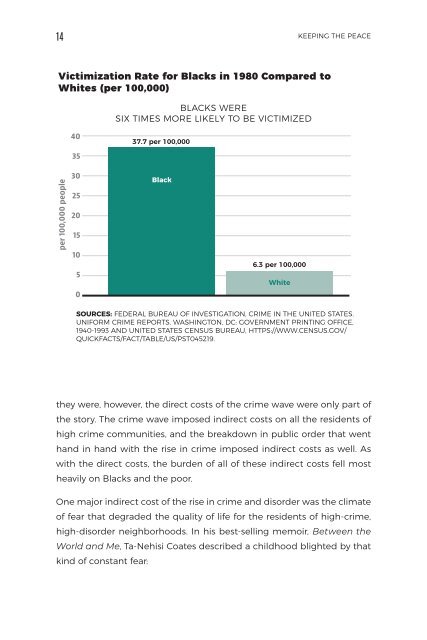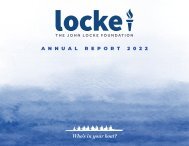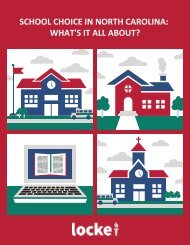Keeping the Peace Through Intensive Community Policing
As crime soars and the breakdown of public order takes its toll on our country, analysis from the John Locke Foundation signals it’s time to adopt a different approach to crime control, one that shifts the focus further upstream, looking at prevention models, rather than exclusively on punitive measures. In this July 2021 report, John Locke Foundation researcher and author Jon Guze explains that the current focus of catching, convicting, and punishing perpetrators after crimes have been committed has come with enormous economic and social costs. However, intensive community policing has proven successful at deterring crime and maintaining order, which leads to safer communities and fewer people living in poverty. Guze recommends a four-pronged plan to move forward with community policing: (1) hire more police officers (2) increase the pay for police officers (3) arm police officers with state-of-the-art training, direction, and support (4) deploy police officers as “peacekeepers” in communities that suffer most from crime and disorder.
As crime soars and the breakdown of public order takes its toll on our country, analysis from the John Locke Foundation signals it’s time to adopt a different approach to crime control, one that shifts the focus further upstream, looking at prevention models, rather than exclusively on punitive measures. In this July 2021 report, John Locke Foundation researcher and author Jon Guze explains that the current focus of catching, convicting, and punishing perpetrators after crimes have been committed has come with enormous economic and social costs.
However, intensive community policing has proven successful at deterring crime and maintaining order, which leads to safer communities and fewer people living in poverty. Guze recommends a four-pronged plan to move forward with community policing:
(1) hire more police officers
(2) increase the pay for police officers
(3) arm police officers with state-of-the-art training, direction, and support
(4) deploy police officers as “peacekeepers” in communities that suffer most from crime and disorder.
Create successful ePaper yourself
Turn your PDF publications into a flip-book with our unique Google optimized e-Paper software.
14 KEEPING THE PEACE<br />
Victimization Rate for Blacks in 1980 Compared to<br />
Whites (per 100,000)<br />
BLACKS WERE<br />
SIX TIMES MORE LIKELY TO BE VICTIMIZED<br />
per 100,000 people<br />
40<br />
35<br />
30<br />
25<br />
20<br />
15<br />
10<br />
5<br />
0<br />
37.7 per 100,000<br />
Black<br />
6.3 per 100,000<br />
White<br />
SOURCES: FEDERAL BUREAU OF INVESTIGATION, CRIME IN THE UNITED STATES.<br />
UNIFORM CRIME REPORTS. WASHINGTON, DC: GOVERNMENT PRINTING OFFICE,<br />
1940-1993 AND UNITED STATES CENSUS BUREAU, HTTPS://WWW.CENSUS.GOV/<br />
QUICKFACTS/FACT/TABLE/US/PST045219.<br />
<strong>the</strong>y were, however, <strong>the</strong> direct costs of <strong>the</strong> crime wave were only part of<br />
<strong>the</strong> story. The crime wave imposed indirect costs on all <strong>the</strong> residents of<br />
high crime communities, and <strong>the</strong> breakdown in public order that went<br />
hand in hand with <strong>the</strong> rise in crime imposed indirect costs as well. As<br />
with <strong>the</strong> direct costs, <strong>the</strong> burden of all of <strong>the</strong>se indirect costs fell most<br />
heavily on Blacks and <strong>the</strong> poor.<br />
One major indirect cost of <strong>the</strong> rise in crime and disorder was <strong>the</strong> climate<br />
of fear that degraded <strong>the</strong> quality of life for <strong>the</strong> residents of high-crime,<br />
high-disorder neighborhoods. In his best-selling memoir, Between <strong>the</strong><br />
World and Me, Ta-Nehisi Coates described a childhood blighted by that<br />
kind of constant fear:











